Castell y Bere

Deep in the heart of southern Snowdonia, nestled against the wild slopes of Cadair Idris, lie the ruins of Castell y Bere—a fortress built not by the English kings, but by a native Welsh prince. Though now a ruin, the story of Castell y Bere is one of defiance, survival, and loss, set during one of the most critical turning points in medieval Welsh history.
Click here to watch our video exploring Castell y Bere and discover its history.
- Region
- North Wales, Wales
- Period
- 13th Century
- Type
- Medieval Castle
- Condition
- Ruin
- Ownership
- Cadw
- Access
- Public - Free
Origins
The castle was built in stone atop a rocky outcrop in the early 1220s by Llywelyn ap Iorwerth, known to history as Llywelyn the Great. Over the course of his reign, Llywelyn's power and influence expanded significantly as he successfully united several of the Welsh kingdoms under his leadership.
From the late 11th century onwards, the English increasingly posed a significant threat to the Welsh. They advanced steadily into Welsh territory, seizing lands in the north and establishing a swathe of occupied territory along the southern border known as the Welsh Marches. This frontier zone was controlled by powerful Norman lords who built castles and asserted authority over the region.
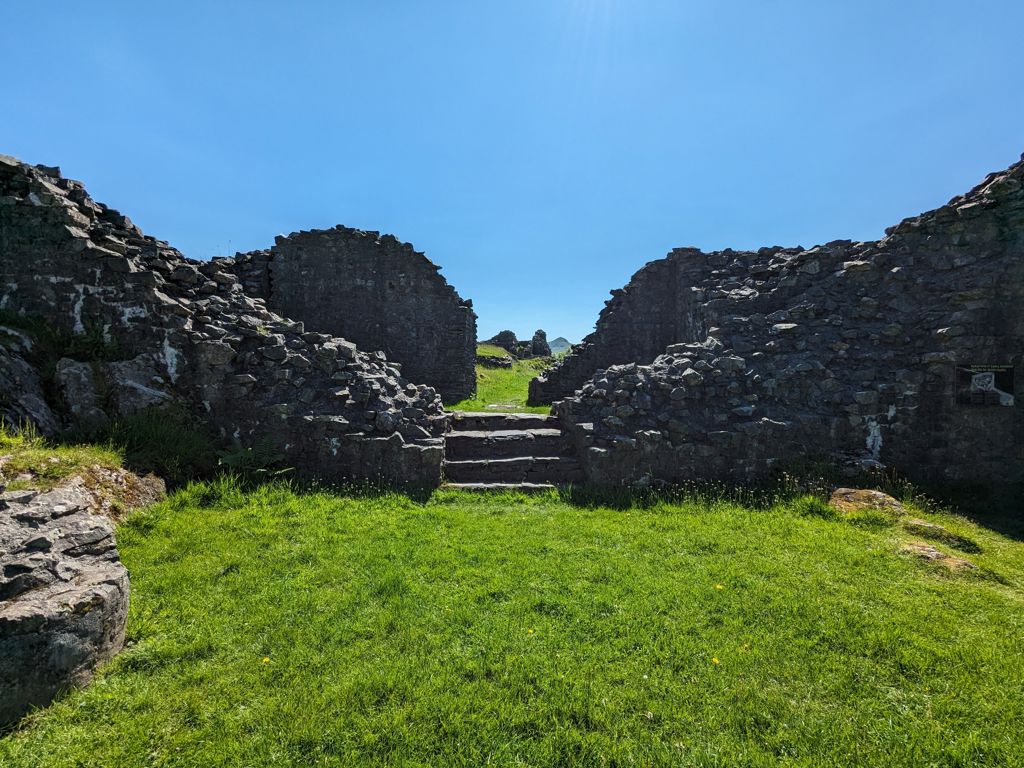
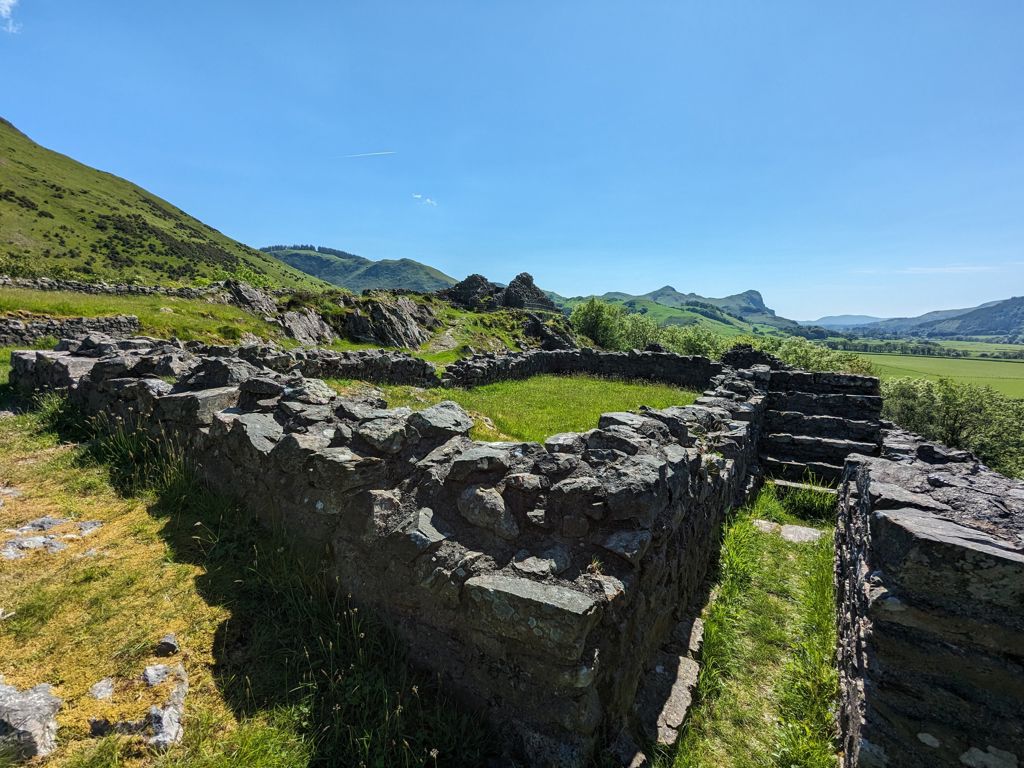
Why did Llywelyn choose this remote location to build his fortress? The answer is actually he built it here for a number of reasons. In 1221, Llywelyn the Great took control of the neighbouring region of Meirionnydd from his own son, Gruffydd, whom he had earlier installed as ruler there. The two had fallen out as Llwelyn believed he was a difficult ruler, prompting Llywelyn to reassert his authority. To secure his new south-western kingdom and to strengthen his hold over the area, Llywelyn began construction of Castell y Bere. Strategically located, the castle was intended to control the local population and oversee the vital mountain trade routes linking Northern and Southern Gwynedd.
The location was also of extreme importance as it guarded the vast green valley that was perfect for an extensive cattle range. During the medieval period, cattle were a vital source of wealth in Wales, not only as a food supply but also as a measure of status and economy. Unlike the more arable farming practices of the English, the Welsh economy was largely pastoral, with livestock—especially cattle—at the heart of daily life and trade.
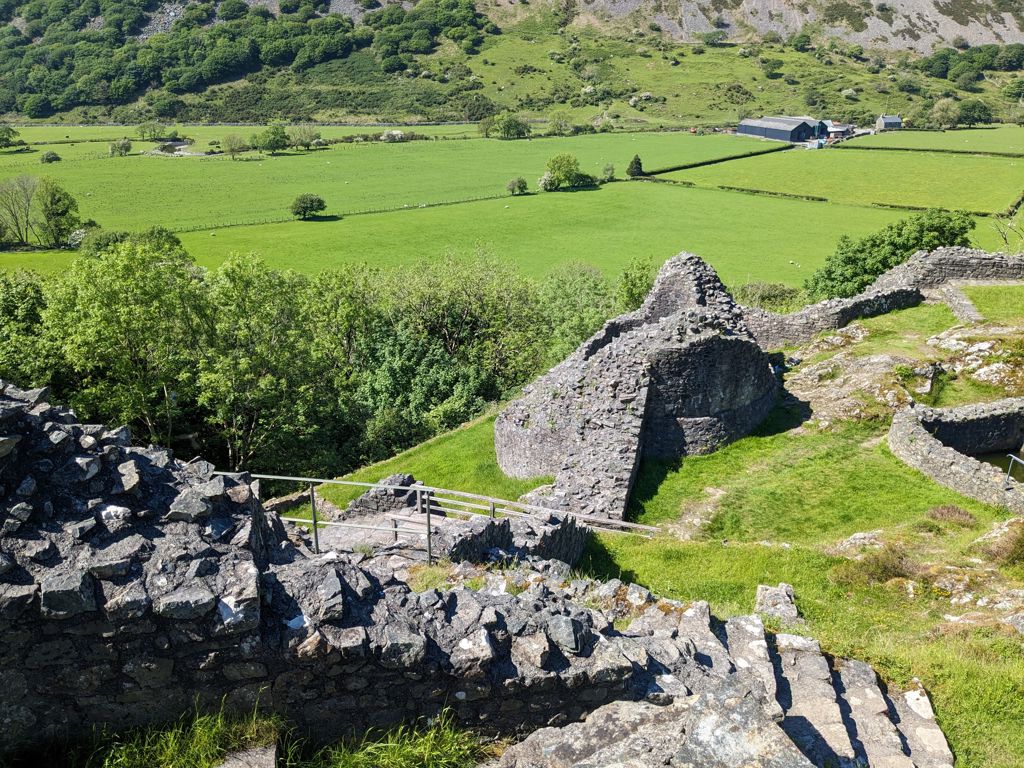
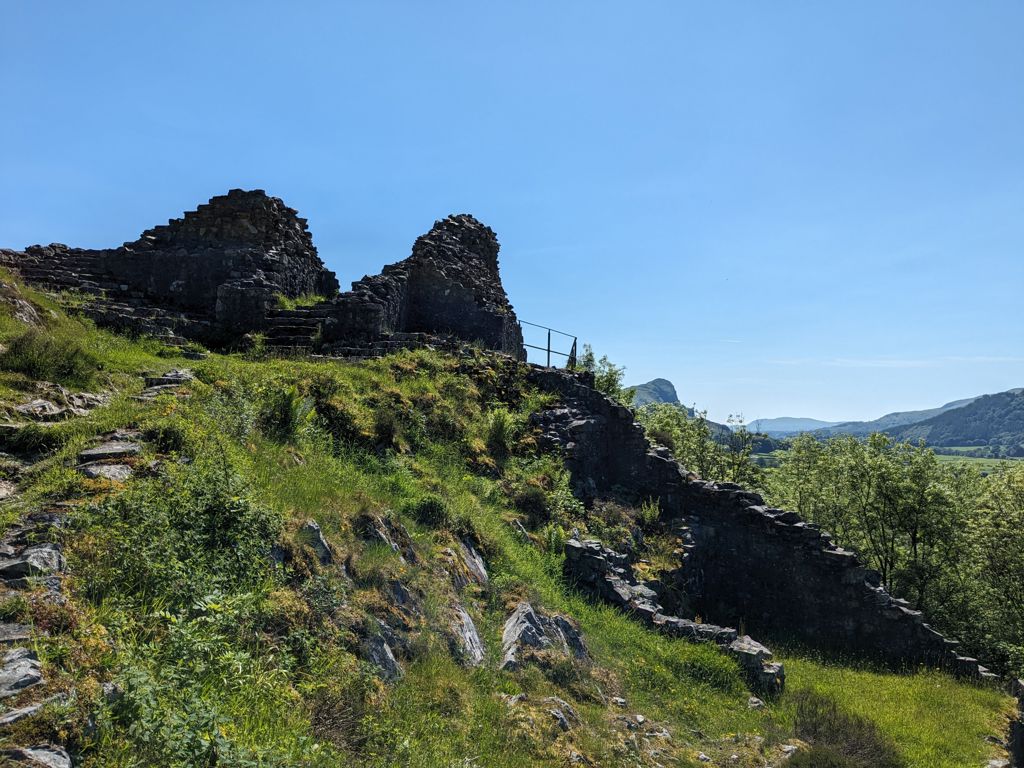
Castle Design
The design of Castell y Bere is a direct response to its landscape. The builders took advantage of every natural feature, working with the contours of the ridge rather than reshaping it. The result was a castle that was long, narrow, and irregular, but highly defensible.
The castle was surrounded by curtain walls and deep rock-cut ditches were carved into the landscape to block easy access to the curtain walls. The entrance to the castle was defended by a barbican and two gate towers. In the courtyard are the remains of various domestic buildings and a large well, which was of vital importance in case of a siege to have a fresh water supply. The north tower features a "D-shaped," design—a distinctive architectural style commonly found in Welsh castles. It is believed that the tower may have originally housed either a hall or a chapel.
Unusually for an early Welsh castle, Castell y Bere shows evidence of decorative architectural features. These include carved sculptures, decorative floor tiles and stained glass windows. Such embellishments are rare in native Welsh castles of the period, making Castell y Bere particularly notable. In fact, it is the only known example, aside from Criccieth Castle, to display these kinds of ornate elements.
In 1255, Llywelyn’s grandson, Llywelyn ap Gruffudd (Llywelyn the Last) took power and is thought to have extended the castle by adding the Southern D Shaped tower. Unlike the northern tower, the southern tower is completely detached from the main structure of the castle and is perched dramatically on a cliff edge. Designed as a self-contained and self-sufficient stronghold, the south tower likely served as a refuge and final defensive position in the event of a siege.
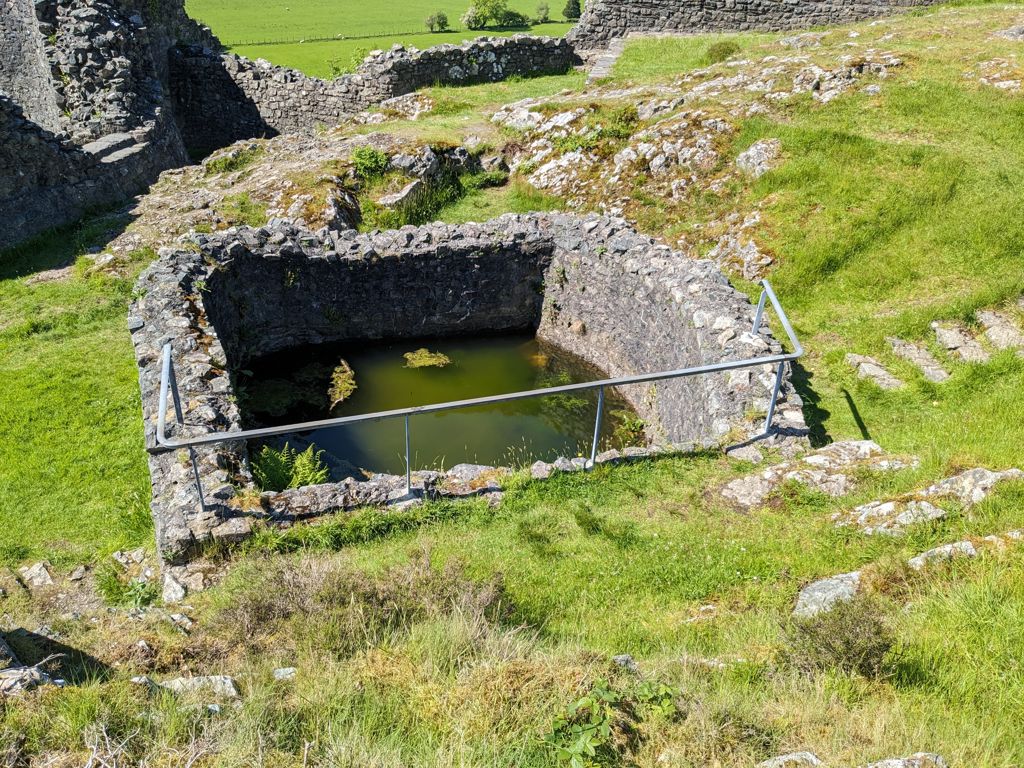
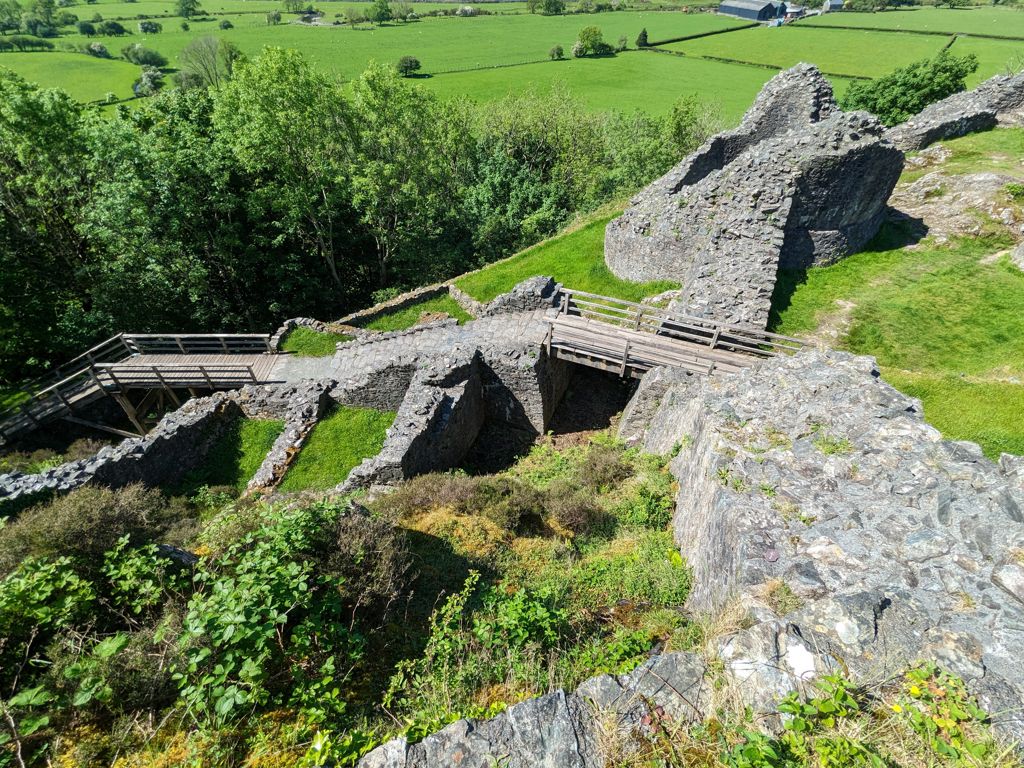
Llewelyn vs Edward
The conflict between the Welsh princes and the English crown persisted into the reign of Edward I. In 1282, Llywelyn ap Gruffudd, the last native Prince of Wales, launched a final campaign against Edward. The struggle culminated in Llywelyn's death near Builth in December of that year, marking a decisive turning point in the conquest of Wales by the English.
In early 1283, Edward sent forces under the command of Roger Lestrange and William de Valence to lay siege and take control of Castell y Bere, which they successfully did. Now that the castle was under Edward’s control he chose to repair the castle following the siege and in 1284 he visited three times and set up an English borough at the foot of the castle, introducing settlers and administrators to govern the region in Edward’s name.
Revolt
In 1294, a major Welsh uprising erupted under the leadership of Madog ap Llywelyn, who considered himself the rightful Prince of Wales. In response, Richard Fitzalan, Earl of Arundel, was ordered in mid-October to secure Castell y Bere against the growing threat. Despite these efforts, by late October the castle was under siege by Madoc’s forces. Robert FitzWalter, the castle’s constable, was dispatched to lead a relief expedition.
The ultimate fate of Castell y Bere remains uncertain, perhaps Madog succeeded in capturing Castell y Bere and chose to burn it to prevent it from falling back into English hands, or perhaps, following the suppression of the revolt, the English simply decided not to invest in repairing the damaged castle and borough, opting instead to abandon them entirely. The exact circumstances remain unclear—and we may never know for certain what truly happened.
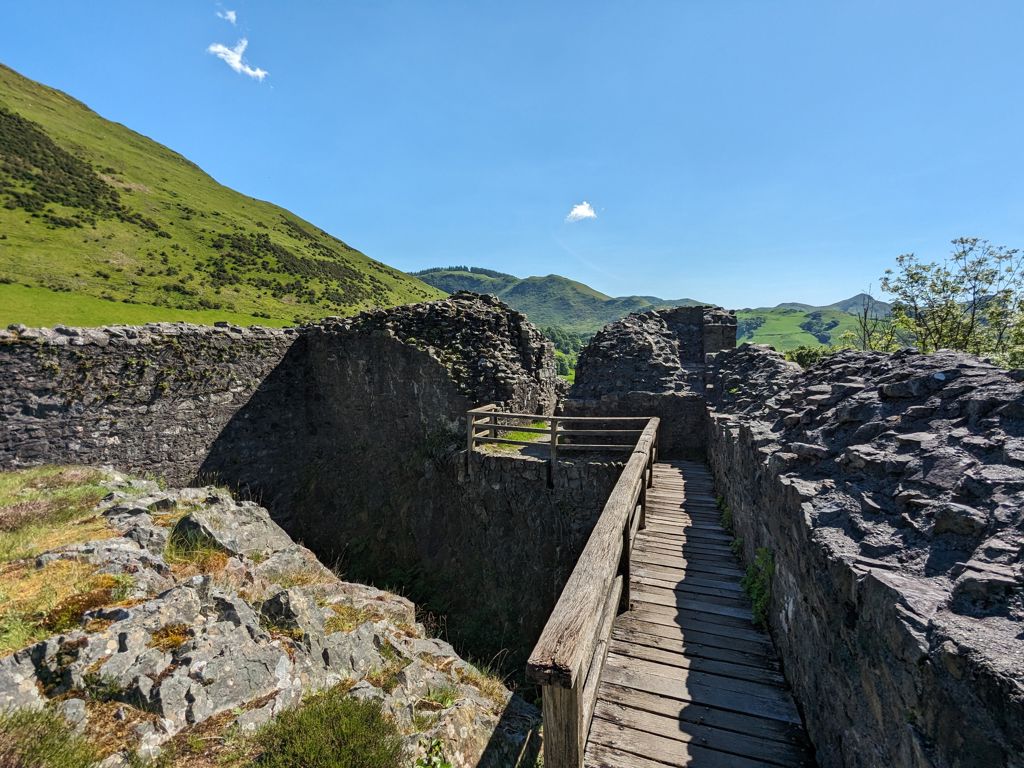
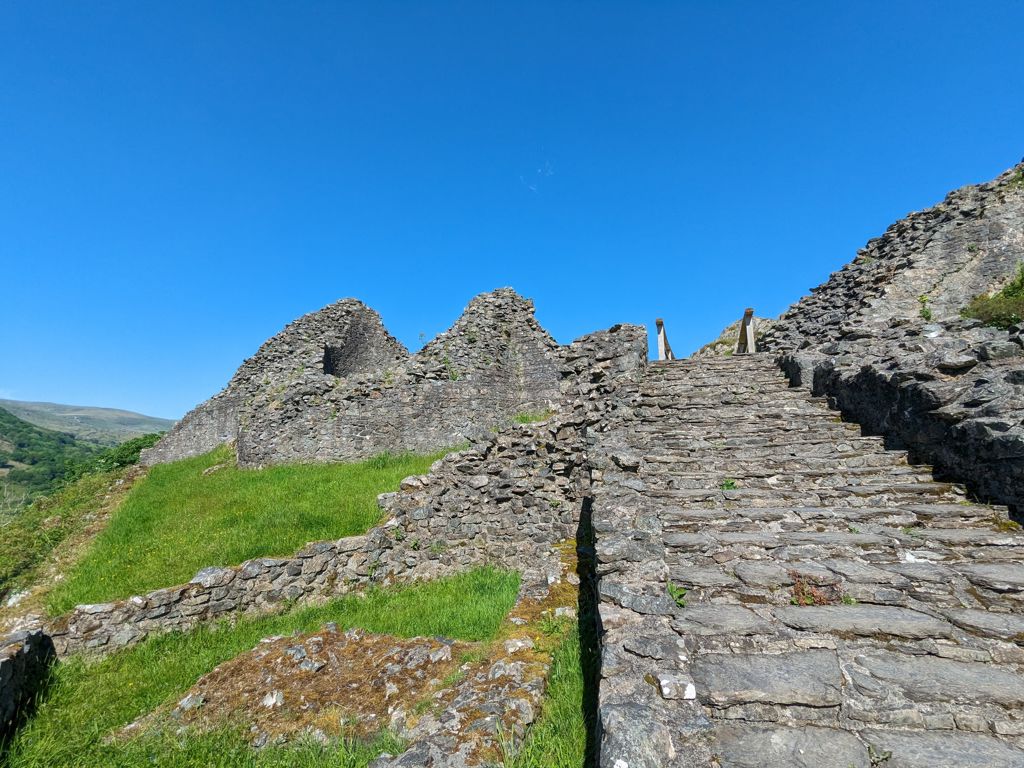
Folklore
The site was never reoccupied or restored, and within just a few years, Castell y Bere had fallen into complete ruin, left untouched for centuries. Over time, the abandoned stronghold became shrouded in legend and superstition. Among the most enduring tales is that of hidden treasure buried beneath the ruins—treasure that, according to folklore, will only be revealed when a true Prince of Wales, descended from the ancient line of Gwynedd, returns to reclaim the land.
Local folklore tells of a ghostly sentry who is sometimes seen at twilight pacing along the ruined wall lines of Castell y Bere. Dressed in a cloak, with a sword at his side, he is said to be one of Llywelyn the Great’s men who refused to abandon his post—even in death. According to the tale, he appears only when danger threatens the land.
Another whispered tale speaks of a woman in white, who wanders near the southern end of the ruins. She is said to have been the wife or lover of a slain Welsh warrior. She reportedly appears at dusk, standing on the ruined southern tower, staring out over the valley in silence.
Now under the care of Cadw, the Welsh Government’s historic environment service, Castell y Bere is freely accessible to the public and serves as a powerful symbol of native Welsh history—a story too often overshadowed by the great castles of English conquest.
